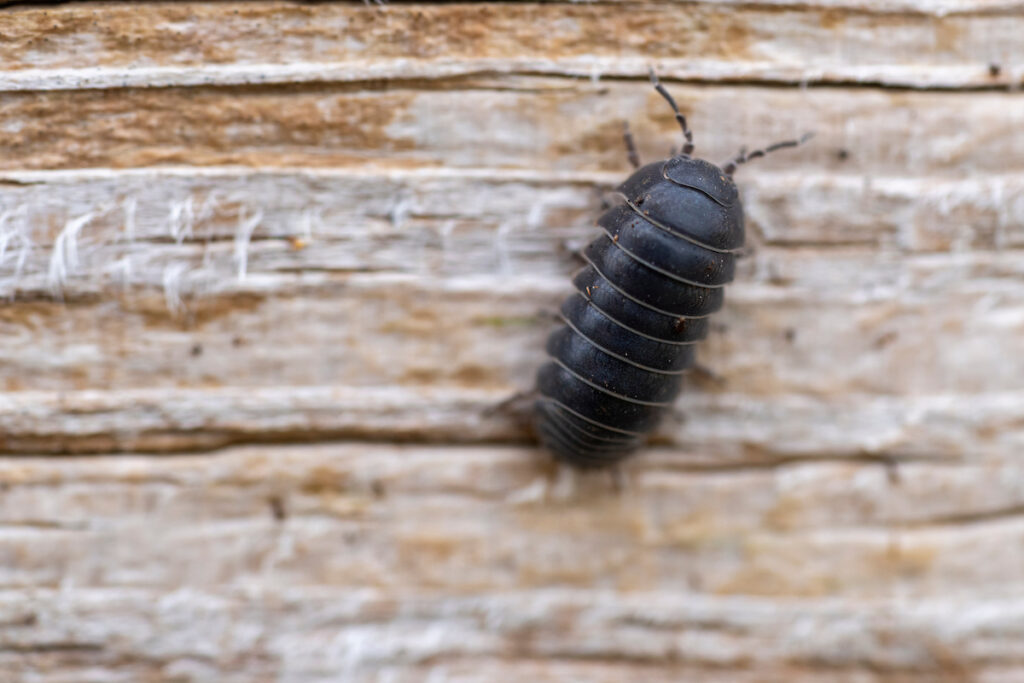Pests indoors on the rise as Texas heat, drought continues
AgriLife Extension offers advice on ants, scorpions, rodents and more
If you’re not a fan of creepy crawlies, especially inside your home, Texas A&M AgriLife Extension Service experts may have some bad news for you. The stretch of very hot, dry weather across much of the state is pushing more pests indoors.
So, you may very well have ants in your pants. You could also have your pants on fire and not even be a liar — thanks to an increase in painful, stinging fire ants.

And, as the warm weather and drought continues in many parts of the state, insects and rodents are more likely to turn your residence into their new home in their search for food and water.
AgriLife Extension entomologists and integrated pest management specialists in the Texas A&M Department of Entomology have reported an increase in the number of ants, fleas, ticks, mosquitoes and a variety of other pests Texans are reporting.
Because if the pests can’t take the heat, they’ll get into your kitchen. They’re on a mission.
Advice from the experts
AgriLife Extension experts shared these observations, advice and tips:
Ants
Ants seem to be coming out of the woodwork, sometimes literally, these days. The most concerning species to people is usually fire ants.
Wizzie Brown, AgriLife Extension integrated pest management specialist for Travis County, said one thing every homeowner should continue doing during hot months is watch for fire ant activity. It is something homeowners may not think about doing since the usual tell-tale signs of fire ants, their mounds, are missing.
“Fire ants are still active foraging for food, but their mounds aren’t obvious right now as the ants are further down in the ground for cooler temperatures,” Brown said.
Fire ants are subterranean, so drought forces them deeper and deeper into the soil until they find moisture they can use for a source of water. They may also move into structures in search of water.
Fire ants may disappear during stretches of hot, dry weather but they will reappear quickly following rain events.
“If people have fire ant disturbances while they are gardening, they can broadcast fire ant bait with a handheld spreader set on the lowest setting in the evening,” Brown said.
Fire ants typically won’t forage during the hottest part of the day, so evening is a better time to treat with bait. She also suggested repairing any leaking faucets, air conditioner units and irrigation systems since moisture will often attract fire ants to the area.
Terrestrial crustaceans
Whether you call them pill bugs or roly polys, terrestrial crustaceans need moisture to survive as well.
As semi-aquatic organisms that breathe via gills, it is no surprise that they can end up indoors in search of water when their outdoor habitat becomes too dry. It is also no surprise to find them dead by an entryway when they get inside and can’t find the conditions needed to survive.
To minimize their numbers, eliminate the moist sites they need to survive. Grass clippings, mulch and piles of leaves can keep soil moist and be a welcome habitat. Ensure that basements, attics and crawlspaces are properly ventilated to keep moisture down as well.
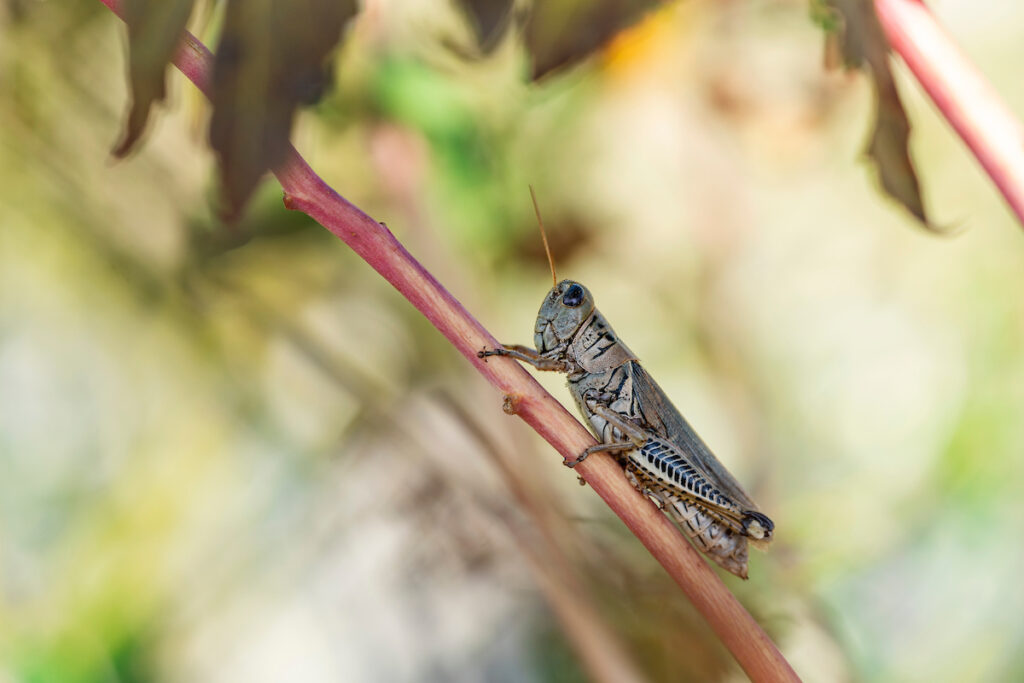
Pill bugs need organic, decaying materials to reproduce, so those in your home won’t create more roly polys.
Grasshoppers and katydids
As areas surrounding homes are drying out, grasshoppers are searching for areas with vegetation to feed on, which can lead them into home landscapes.
“Grasshoppers and katydids are moving into landscapes that still have green vegetation from being irrigated,” Brown said.
Until they hop-a-long out of your area, you can prevent adult grasshoppers and katydids from getting to prize plants by physically blocking them with row covers or fine mesh stainless steel screening.
Cockroaches
Cockroaches are searching for optimal temperatures and water, which can lead them inside homes and into areas like kitchens and bathrooms, said Molly Keck, AgriLife Extension integrated pest management program specialist, Bexar County. Go around the outside of your home to try to figure out where they are getting in and fix the problem by exclusion.
“Make sure trees and shrubs don’t overhang or touch your house, your doors and windows are properly sealed, screens are in good repair, and cracks, crevices, pipe and wire penetrations are sealed,” Keck said.
There are quite a few chemical and non-chemical means to eliminate cockroaches indoors and out. Sanitation and limiting their access to food, such as crumbs and things left open in pantries or out on counters, are always important regardless of the temperatures.
Scorpions
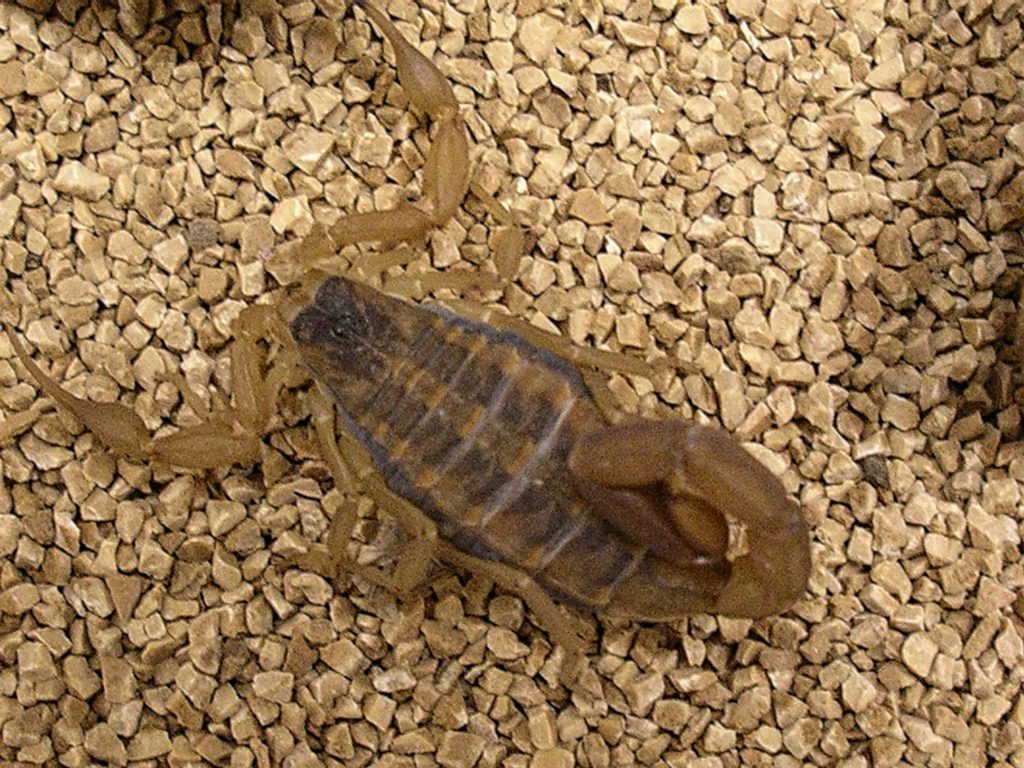
Perhaps one of the most universally detested pests in Texas is the scorpion. If it looks like your home is becoming a boarding school for these stingers, you can thank the weather once again.
“Scorpions are on the move,” Keck said. “They are looking for water and cooler temperatures and when they feel that temperature difference below a door or by another small crack, they can squeeze their way inside.”
Brown explained that scorpions are nocturnal, hiding during the day to help manage temperature and water balance.
Anyone who has turned on a bathroom light at night to see one scurry behind a toilet or, even worse, stepped on one on their way to that bathroom barefoot, knows between their stinger and pinchers these arachnids are a formidable foe.
Using a UV light at night can help find scorpions since they glow a blue-green color and sticky traps in those areas can help catch them. Eliminate as many entry points into your home as possible and don’t hesitate to call a professional.
With a life span that can usually range from three to five years, and a record of 25 years in captivity, it isn’t as if you want to wait one out.
Although stings are painful, only the Arizona bark scorpion has a fatal sting, and it is not found in Texas.
Termites
Keck said she is also receiving calls on desert or agricultural termites in lawns. Those are not structurally significant termites, but mainly feed on roots of native and turf grasses.
“When it’s hot and dry, they move further up in the soil with the shallower roots and to look for more moisture that is probably closer to the surface from sprinklers and/or dew,” she said. “Then they become above ground feeders and either cause some damage to turf or are concerning to homeowners to find in the yard since everyone assumes all termites are bad structure-damaging termites.”
Keck said when possible, breaking up termite mud tubes daily may be the best option for management. Keeping your lawn watered and healthy is also important but given the drought that is not realistic for most Texans right now.
Mud tubes are small tunnels made by worker termites. Around the size of a straw, they are made of small pieces of soil and wood and usually found around termite nests, wood structures and concrete or stone foundations.
“They tend to be found in turf that is already stressed, not doing well, thin or dying as opposed to super healthy turf,” she said.
Rats, bats and others
Rodents are often driven to buildings to seek water and escape extreme temperatures. Summer is an ideal time to ensure that buildings are pest proofed and rodents are under control.
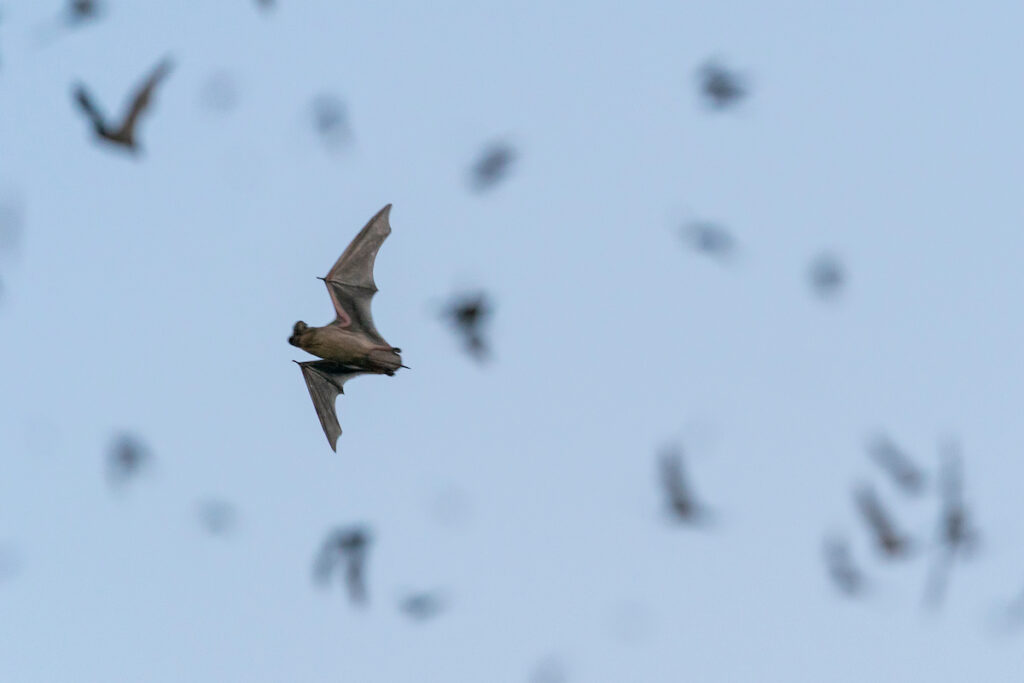
“Remember rodents only need 1/4 inch — about the size of a dime — to start to make entry into your home or a building,” said Janet Hurley, AgriLife Extension integrated pest management specialist, Dallas.
“This is also a good time to start watching for bats as well,” Hurley said. “If they have made a home in your structure recently, you can start watching when they leave so you can prepare to seal up their entry point and exclude them this fall.”
Mosquitoes
As temperatures rise and creeks and ponds dry up, conditions improve for disease carrying species of mosquitoes.
To keep numbers down eliminate or treat small bodies of standing water in creek beds, ditches or temporary ponds. Such sites are more likely to breed encephalitis and West Nile virus-bearing mosquitoes. The AgriLife Extension Mosquito Safari website is a good resource for information about how to reduce their availability to water around the home and protect yourself from bites.
Blister beetles
Blister beetles sound like something out of a horror movie for a good reason. The beetles expel bodily fluids when disturbed and cause skin irritations.
Blister beetles are an issue once again and reports of them have increased, said Sonja Swiger, Ph.D., AgriLife Extension specialist, Stephenville.
“Blister beetles are named from the blistering they can cause when the secretions come in contact with human skin,” Swiger said. Cantharidin, a blistering agent in their blood, is what causes the irritation. This chemical is retained within the beetles even in death.

Blister beetles typically feed on plants in groups. In addition to damaging crops, horses and sheep can die from consuming the beetles.
Millipedes
Millipede mass migrations can occur during any summer, fall and spring. And while mass infestations might be less than appealing, especially indoors, they will often end before you need to bother to treat for them. If you find them inside your home, a broom and dustpan will do the trick and insecticide indoors is not typically needed.
Plants and pests
Drought and high temperatures have put many trees and shrubs under stress. Stressed plants are more susceptible to some pests, especially borers.
Extra care should be directed towards valuable landscape trees and plants during periods of drought. Make sure high value trees receive extra water and look for signs of borers or other stress. At the first sign of borer attack, consider applying a borer preventive spray, such as permethrin.
During hot weather, spider mites are also likely to cause more damage than they otherwise would.
Inspect shrubs and plants for the telltale webbing and yellow stippling patterns on the tops of leaves and water mite-prone plants regularly. Prune the most heavily infested plant parts when practical and consider applying a mite control product to high-value plants.
Prevention of pests
Prevention is usually the best cure, the specialists said. The goal of integrated pest management is not to eradicate pests, but to eliminate pest problems by strengthening and stabilizing the landscape so that conditions are more favorable for plants than for pests.
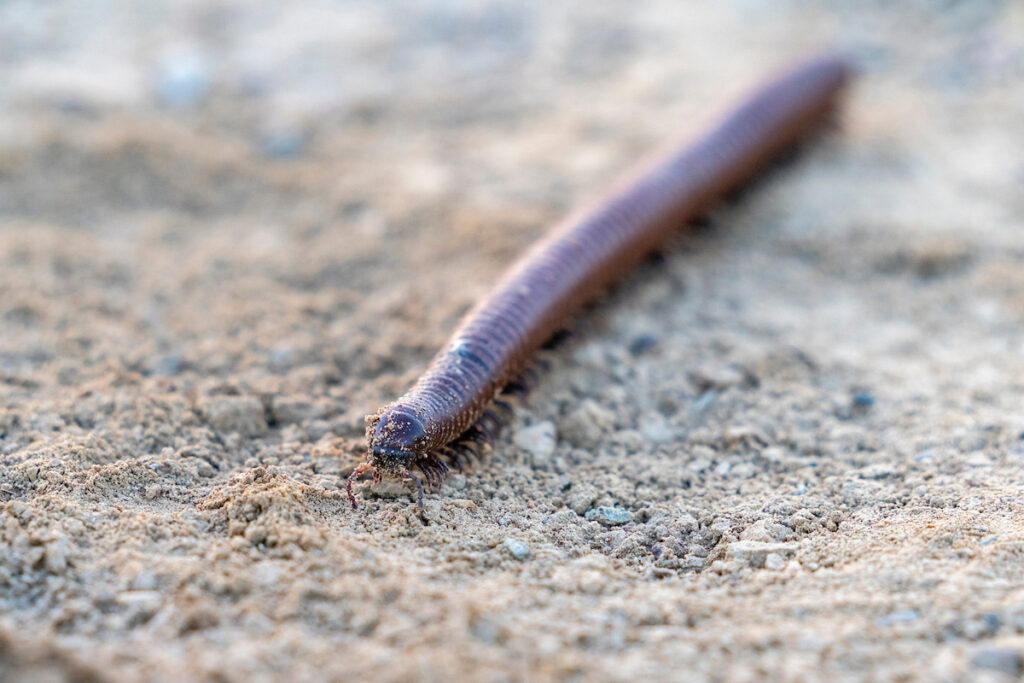
This balance is achieved by employing a combination of practices to prevent or avoid pest problems rather than treating them once they occur.
To best help prevent indoor visitors, focus your efforts outside. Make sure mulch is kept away from building foundations, and that weep holes and other entry points are screened or sealed. In severe cases, it may be helpful to apply an insecticide in the form of granules or sprays around the perimeter of the structure and around windows and doorways.
It is crucial to make sure the insecticide you choose is appropriate for the area and pest you are targeting. Read all labels and keep pets and people away from treated areas until the product is completely dry. Always pay attention to the warnings on labels.
The AgriLife Extension Integrated Pest Management website offers information, courses and contacts for Texans dealing with pests.

